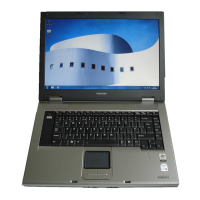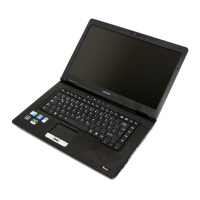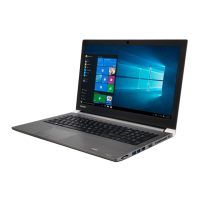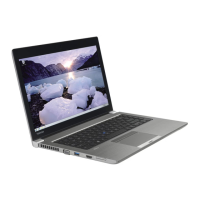1-8 User’s Manual
Introduction
Communications
Modem An internal modem provides capability for data
and fax communication. It supports V.90 (V.92).
Refer to V.90 section in Appendix E. The speed
of data transfer and fax depends on analog
telephone line conditions. It has a modem jack
for connecting to a telephone line. It is
preinstalled as a standard device in some
markets. Both of V.90 and V.92 are supported
only in USA, Canada and Australia. Only V.90 is
available in other regions.
LAN The computer has built-in support for Ethernet
LAN (10 megabits per second, 10BASE-T) and
Fast Ethernet LAN (100 megabits per second,
100BASE-Tx).Refer to the Parts Numbers
section in Appendix I.
Wireless LAN Some computers in this series are equipped with
a Wireless LAN mini-PCI card that is compatible
with other LAN systems based on Direct
Sequence Spread Spectrum / Orthogonal
Frequency Division Multiplexing radio technology
that complies with the IEEE 802.11 Standard
(Revision A, B or G), and Turbo Mode.
■ Automatic Transmit Rate Select mechanism
in the transmit range of 54, 48, 36, 24, 18, 12,
9 and 6 Mbit/s. (Revision A/B, B/G, A/B/G
combo type)
■ Automatic Transmit Rate Select mechanism
in the transmit range of 11, 5.5, 2 and 1 Mbit/
s. (Revision B)
■ Automatic Transmit Rate Select mechanism
in the transmit range of 108, 96, 72, 48, 36,
24, 18 and 12 Mbit/s. (Turbo Mode, Revision
A/B/G combo type)
■ Frequency Channel Selection (5 GHz:
Revision A / 2.4 GHz: Revision B/G)
■ Roaming over multiple channels
■ Card Power Management
■ Wired Equivalent Privacy (WEP) data
encryption, based on 152 bit encryption
algorithm. (Atheros module type)
Wired Equivalent Privacy (WEP) data
encryption, based on 128 bit encryption
algorithm. (Intel module type)
■ Advanced Encryption Standard (AES) data
encryption, based on 256 bit encryption
algorithm. (Atheros module type)
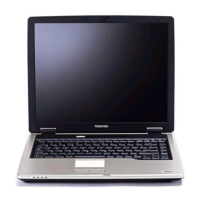
